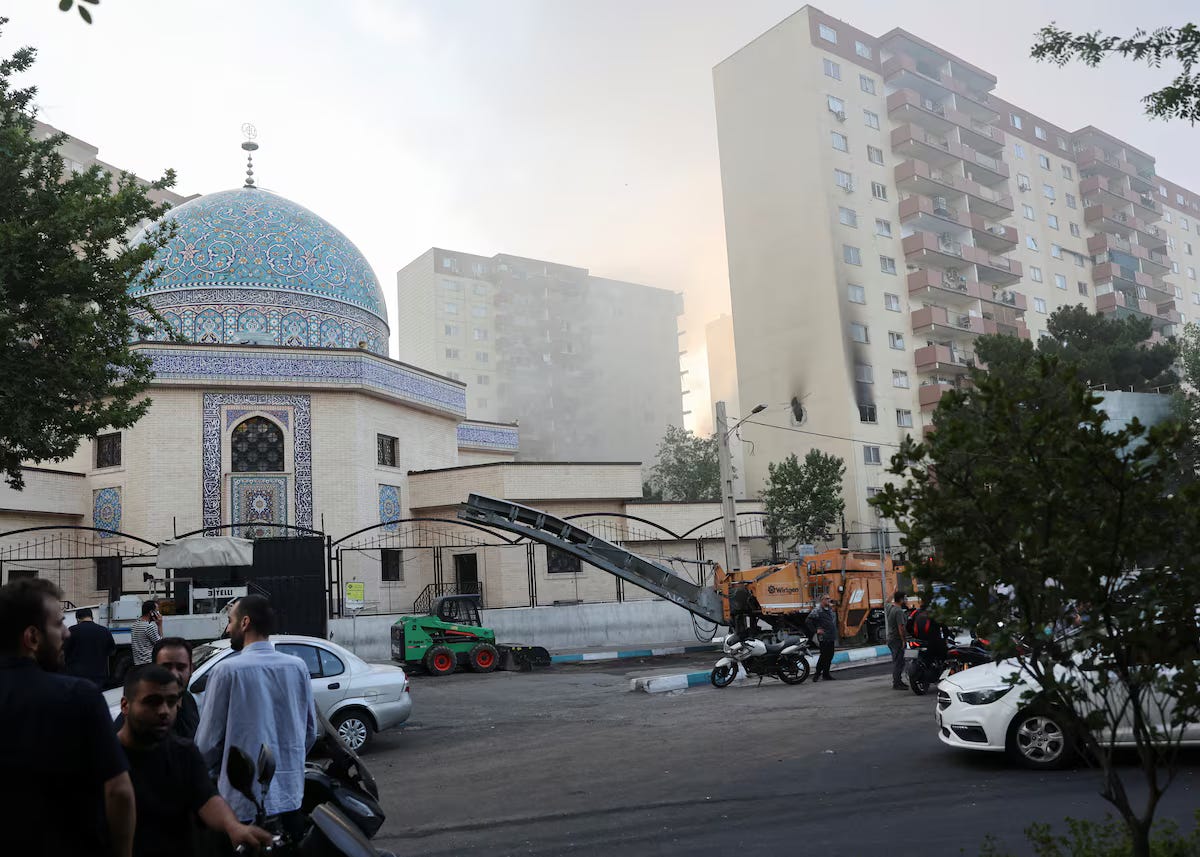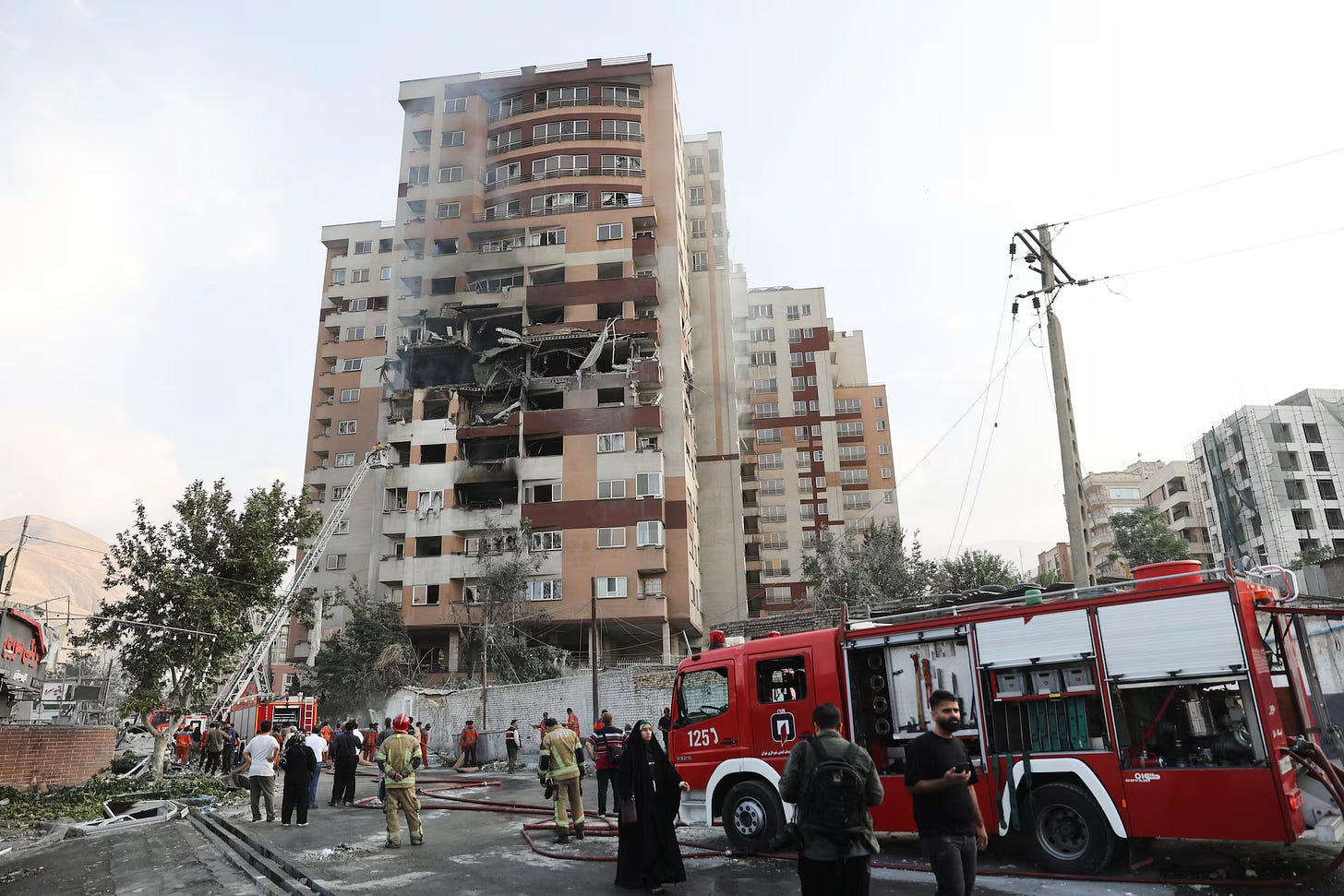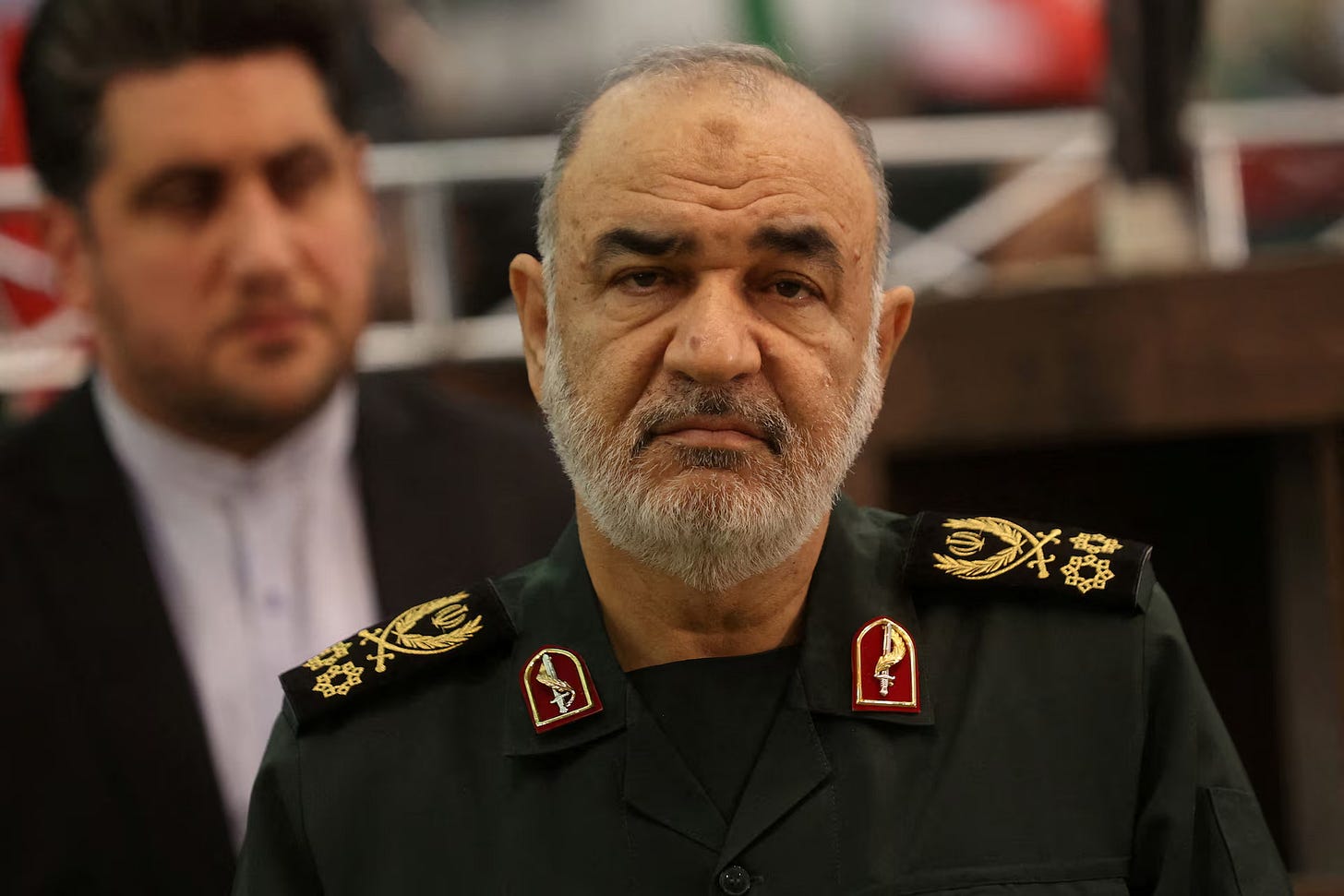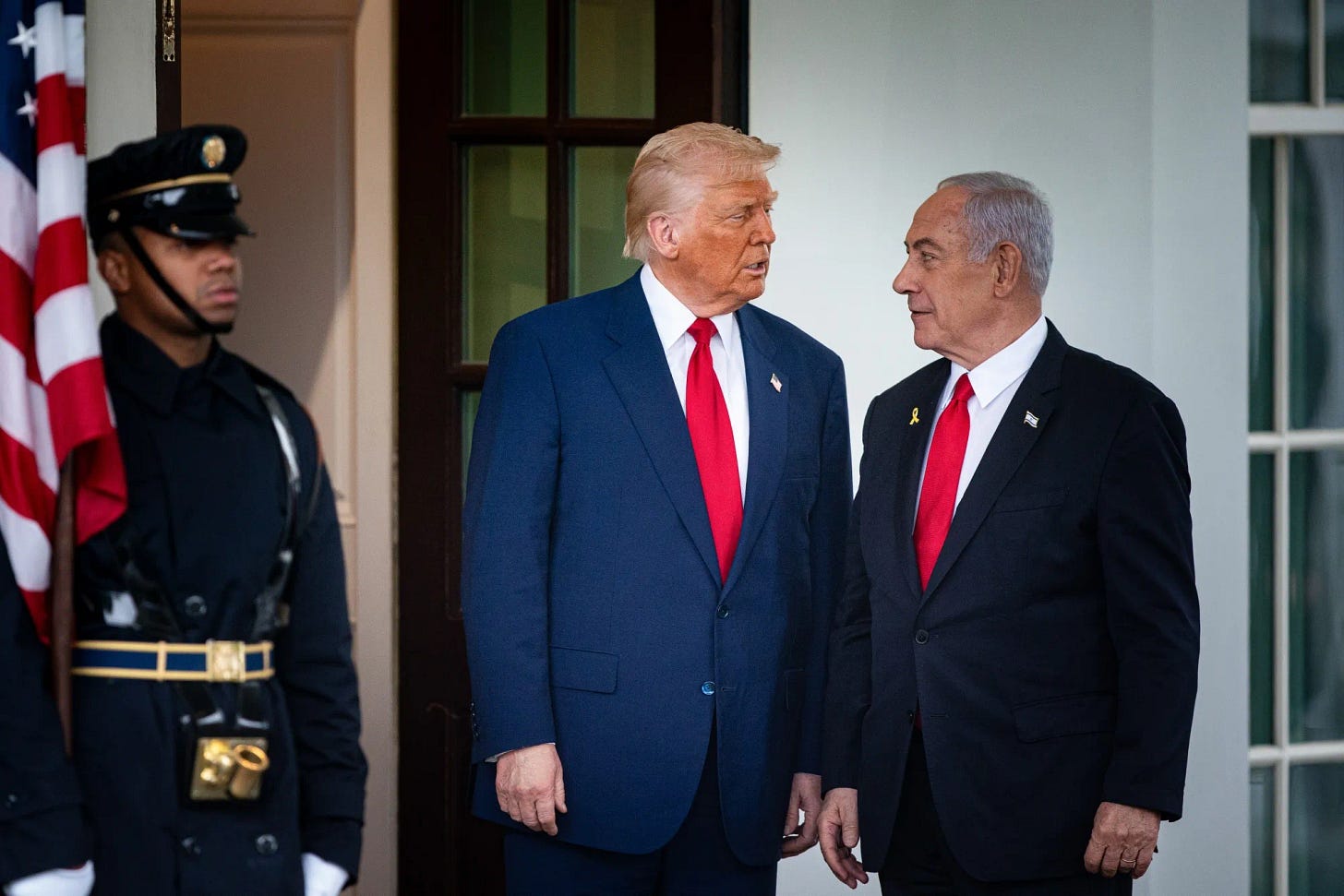A series of violent explosions rocked several Iranian cities, including Tehran, at dawn on Friday, following airstrikes carried out by Israeli occupation aircraft that targeted nuclear and military facilities, as well as residential neighborhoods in the Iranian capital.
The Israeli military described the operation as a “preemptive strike,” using the exact words of Israeli Defense Minister Yoav Gallant in his official announcement. The attack came after an explicit warning from U.S. President Donald Trump, indicating a possible imminent Israeli strike on Iran’s nuclear installations, signaling that a moment of confrontation was approaching.
The Israeli assault on Iran represents not only a major military escalation but also a critical turning point in the escalating regional confrontation. As a unilateral Israeli operation—without direct American involvement—it opens the door to complex scenarios, although Washington remains present, at least behind the scenes, through defensive and diplomatic support, foreshadowing a strategic inflection point in the region.

Israel Enters the Point of No Return
Defense Minister Yoav Gallant announced the launch of a military operation against Iran, codenamed “Rising Lion,” alongside declaring a state of heightened alert on Israel’s home front in anticipation of an imminent Iranian response.
“In response to the preemptive strike Israel carried out against Iran, we expect Israel and its civilian population to be targeted by missiles and drones,” Gallant said in an official statement.
Prime Minister Benjamin Netanyahu said the attack targeted “leading Iranian nuclear scientists working on bomb development, as well as sites linked to their ballistic missile program.” He described Israel as living through a “decisive moment” and vowed that operations would continue “as long as necessary,” claiming Iran possessed enough enriched uranium to build nine nuclear bombs.
The Israeli military reported it had “completed the first phase of the operation” involving dozens of fighter jets striking “tens of military targets, including nuclear sites, in various parts of Iran.” An Israeli military official also confirmed the attack struck Iranian military commanders and that operations were ongoing.

Chief of Staff Eyal Zamir described the moment as the “point of no return,” stating, “We cannot wait any longer,” and warning that “anyone who dares challenge us will pay a dear price.” He added, “We fight this battle together, aiming to secure a safer future for Israel and its citizens.”
These statements make it clear that Israel views the attack not as a limited strike but as a strategic reset in its rules of engagement—one that could lead to broad escalation well beyond the initial air raid.
Assassinations: The Covert Dimension
Despite multiple signs suggesting an Israeli strike on Iran was possible, the scale, complexity, and surprise factor of this operation added a shocking element.
While the anticipated focus was on nuclear facilities, the strike was broader and more intricate than expected: it aimed not only at nuclear infrastructure but also at disrupting Iran’s military command structure.
Iranian television reported explosions in northeastern Tehran, specifically in the Mohallati district, home to top IRGC and military commanders. Footage showed smoke rising from the Lavizan neighborhood, housing key army, IRGC, and General Staff operations.
All inbound flights to Imam Khomeini International Airport were suspended, indicating the severity of the strikes.
A New York Times report states that Israel hit at least six military bases around Tehran—including the Parchin nuclear site—and that the wave of attacks appeared to include coordinated assassinations of senior military and scientific figures .

Iranian media claimed the "Zionist entity" carried out targeted killings within the operation. Tasnim News, close to the IRGC, reported the assassination of IRGC commander-in-chief Major General Hossein Salami in a strike on the central command HQ.
It also claimed the deaths of Fereydoun Abbasi, former head of Iran's Atomic Energy Organization, Mahdi Tehranji, president of Azad University, and Major General Mohammad Bagheri, Chief of Staff of the Armed Forces, while the fate of other key figures remains unclear.
Further strikes reportedly ignited smoke at the Natanz nuclear facility in Isfahan Province; buildings in eastern Tehran were bombed, and explosions were heard in Kermanshah and Lorestan provinces—alongside reports of casualties.
According to an Israeli military source cited by Army Radio, Mossad executed sabotage operations deep within Iran against air-defense and strategic missile systems. Israeli journalist Barak Ravid told CNN that a senior official informed him of covert "sabotage operations" on heavily fortified Iranian sites .
The scale of damage and the nature of the targets suggest Iranian preparations were insufficient for this level of threat—especially in the timing and focus on top leadership, which Iran did not anticipate. This contributed significantly to the success of the initial strike.
The United States: “We’re Not a Part of This… but!”
In the immediate aftermath of the Israeli attack, U.S. Secretary of State Marco Rubio issued a clarifying statement, asserting, “Israel acted unilaterally against Iran tonight. We are not a party to these strikes.” He emphasized that Washington had been warned in advance by Tel Aviv that the operation was “necessary for self-defense,” consistent with the Israeli account.
Rubio warned Iran against targeting U.S. facilities or personnel, stating: “Our top priority is the protection of U.S. forces,” and added firmly, “Let me be clear, Iran must not target U.S. interests or forces.”
This public distancing belies extensive preparatory activity by Washington ahead of the strike, which included evacuation of diplomatic staff and military dependents from U.S. posts in the Middle East—most notably from the U.S. embassy in Baghdad, as well as facilities in Kuwait and Bahrain.
U.S. military and embassy bases across the region were placed on high alert amid intelligence that a major Israeli operation was imminent.
American diplomatic sources had described the situation hours before the strike as “the most dangerous in years,” and President Trump declared that the United States “will never allow Iran to acquire nuclear weapons.”

CBS reported that senior U.S. officials were told that “Israel is fully ready to execute a military operation against Iran” with expectations of an Iranian response targeting U.S. sites, particularly within Iraq .
Despite denying any direct role, the U.S. made no effort to stop the strike and did not pressure Tel Aviv to call it off. Ambassador Mike Huckabee stated, “I don’t expect Israel to attack Iran without U.S. green light, but in the end the decision is theirs,” suggesting implicit American approval.
Limited Strikes or Widening Regional War?
This surprise Israeli strike has placed the Middle East on a more volatile footing than any time in recent memory. While labeled a “preemptive strike,” Prime Minister Netanyahu clearly indicated that operations would continue “as long as necessary,” implying a multi-wave campaign targeting the structural pillars of Iran's military strength.
The sharply defined objectives appear focused on neutralizing Iran’s nuclear program—or at least rolling it back by years—and disabling long-range ballistic missile capabilities, viewed by Israel as existential red lines.
The campaign does not currently aim to topple the Iranian regime or dismantle its governance structures—evident by the absence of strikes on civilian infrastructure—suggesting a tactical focus aimed at "response and deterrence" rather than total war.
By publicly distancing itself from the strikes, the U.S. aims to draw a line between its strategy and Israel’s actions—implicitly steering the Iranian response to avoid targeting U.S. interests.
Nonetheless, Washington remains the strategic anchor in Israel’s defense, underpinning the regional air-defense architecture through U.S. Central Command (CENTCOM), involving allied Arab states in integrated operations.
Iran has vowed “a decisive attack” against the “Zionist entity” in response. Supreme Leader Ali Khamenei affirmed the retaliation would be forthcoming but would be shaped by two main factors: the extent of damage inflicted by the initial strike and U.S. involvement if the conflict escalates .
Iranian options may mirror October 2024’s "True Promise 2" operation—rocket and hypersonic missile barrages designed to overwhelm Israeli defenses. However, the effectiveness will hinge on how severely Iran’s nuclear and missile infrastructure was damaged and the resilience of Israeli and U.S. defensive systems.

Israel and the United States reportedly prepared for this kind of scenario by reinforcing regional air-defense networks and operational coordination—drawing lessons from earlier "True Promise" operations—and neutralizing Iran-backed proxies in Lebanon, Syria, Iraq, and Yemen to prevent multi-front escalation.
While the current dynamic might appear as a tit-for-tat exchange, the most dangerous scenario remains that this Israeli operation could catalyze a broader regional campaign, potentially culminating in decisive U.S. military action against the Iranian regime.
President Trump recently stated he is “more confident than ever that the U.S. military will restore American glory in the days ahead,” hinting at a looming strategic climax.
Taken together, it seems this Israeli attack may well be the opening salvo in the final phase of a region-wide realignment engineered by Israel and the United States—a moment Netanyahu described as “the perfect opportunity to achieve historic change in the balance of power.”



